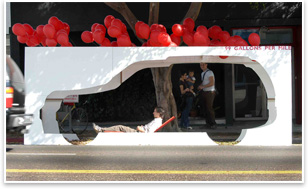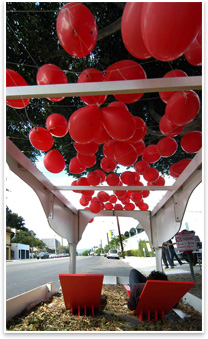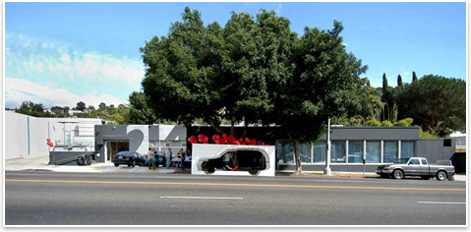
Summary: Have you heard about Park(ing) Day? Invented by REBAR, an artist collective in San Francisco, Park(ing) Day is an annual, day-long global event involving designers, architects, artists, activists, and ordinary citizens who collaborate to transform metered parking spaces into park places. The idea is to occupy a parking space by feeding the meter and setting up whatever statement you want in the parking space about the environment and the insane amount of urban real estate that we devote to parking cars on streets. If we could turn all of those parking spaces into park places, our cities would be green in no time.
“It’s emblematic of our office culture,” says Lehrer, “of the creativity and engagement of the people who work here.” In addition to Lehrer, the team included Robin Sakahara, AIA; Nerin Kadribegovic, Assoc. AIA; David Milner, AIA; Tim Jordan; Erik Alden; Travis Frankel; Ellen Pietrzyk; Karen Dattilo; Josh Penhaskashi; Valerie Krasny; and Nate Cole.
A bit of research about SUVs revealed that typically one of these road monsters emits a little over a pound-and-a-half of carbon for every mile it is driven. Lehrer’s associates translated the carbon emitted into volume, and found that it would fill 99 gallon-sized balloons. Filling the balloons with helium was a creative, catchy way to help people visualize in a non-technical way just how much carbon dioxide an SUV expels in a relatively short distance. The 99 balloons were festooned across the top of the phantom SUV and text was added to explain the significance of the festive red inflatables as they bounced and bobbed in the wind. And they provided the creation with a title: “99 Gallons Per Mile.” Lehrer’s office worked through the local AIA chapter to identify nearby architecture firms who would join them in solidarity on Park(ing) Day. The design made people slow down, smile, take a look, and perhaps broaden their awareness of not only how much space is apportioned to stationary cars in the city, but also to visualize the amount of carbon that our car culture contributes to global warming. Like many architecture practices, Lehrer Architects has embraced principles of sustainability in the design of its buildings. But the firm’s creation on Park(ing) Day is an inventive and gently humorous example of how architects can engage in a public demonstration of, and discourse about, the environmental impact of the choices we make. Architects should be leading the discussion, and curbside is a perfect place to start the conversation. |
||
Copyright 2007 The American Institute of Architects. All rights reserved. Home Page |
||
news headlines
practice
business
design
recent related
› Preparing for the “Inconvenient Truth”
› Greening God’s House
› Does Size Really Matter?
Michael J. Crosbie, PhD, AIA, writes extensively about architecture and design and is chairman of the University of Hartford’s Department of Architecture. He can be reached at crosbie@hartford.edu.




